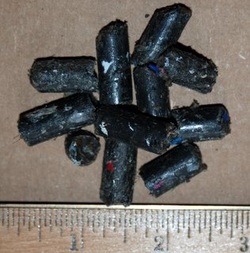Where Do We Start?
The US waste
industry today operates much as it has in decades, with the only major changes
being significant consolidation among the players (Waste Management, BFI,
Republic) and a significant reduction in the number of operating landfills
across the country (nearly 8,000 in 1998—less than 1,800 today). The best way
to look at Reviresco today is through three separate perspectives:
These Elements Can Drive a New Way of Thinking About Waste
- Financial: The combination of the consolidations and the reduction in landfills are causing pricing changes, mainly in the matter of transportation costs, to municipalities. While many landfill tipping fees remain very low, the cost of hauling the waste is increasing significantly. Mass burn “Waste to Energy” facilities are attracting gate fees that are as much as double the landfill tipping fees in many states. Finally, on the financial front, natural resource prices continue to rise globally making recycling of metals, some papers and plastics increasingly economically viable;
- Public/Political: There is growing popular sentiment, which is creating some degree of pressure at the political level to “do something” about waste. The US record of waste management is somewhere in or near last place in the developed world, i.e. Germany landfills less than 20% of its municipal waste—the US landfills 70%. Landfill gas (methane) is 22-times more potent a greenhouse gas than carbon dioxide. While man-made global warming is not a universally-held concern in the US, there is enough political interest to indicate some degree of pressure in many social/political circles.
- Waste to Energy: There is significant energy value in garbage that is processed properly. The problem with processing in the past is that the EIEO (Energy In/Energy Out) balance is out of whack in that more energy is used to process and burn the waste that the amount of energy derived from it. The system Reviresco will build has solved that problem with some unique engineering. In fact the energy balance for waste processed into fuel by our system is 5.4:1—that is, for every BTU of energy we use in the process, we get 5.4 BTU in residual fuel. At present, there isn’t an established market for the fuel, but in time a market will develop and the fuel product will sell for it’s BTU value relative to the values of coal, natural gas and oil. If the US were to adopt a European style cap and trade system in an attempt to reduce carbon emissions, which will probably happen at some time in the future, there could even be a premium because the waste-to-energy product is considered a biofuel from which emissions don’t count for cap and trade calculations.
These Elements Can Drive a New Way of Thinking About Waste
New Fuel--From Garbage

These pellets were made from unsorted black bag garbage--just as it came off the truck. Metals have bee removed in the process and were recycled. Dirt, grit, glass and water were also removed. The pellets are an ideal biomass fuel for use in heat-consuming industries such as glass manufacturing, electricity generation, steel making and cement production. Some of these industries in Europe have been using fuel like this for several years.
